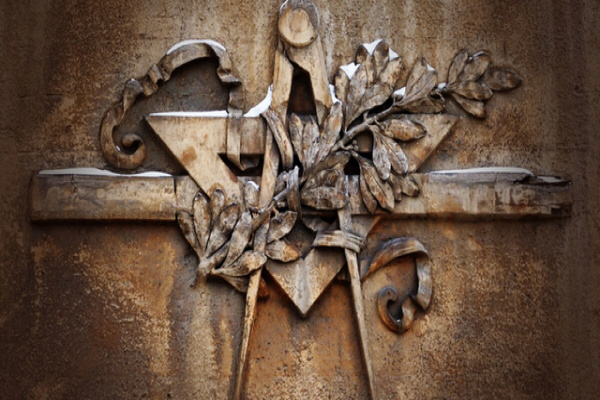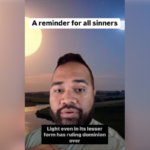
Is Masonry Given Too Much Credit for LDS Temple Ceremonies?
Currently, the influence of Masonry on The Church of Jesus Christ of Latter-day Saints is pretty close to zero. Most Latter-day Saints are not Freemasons, and for most of the 20th century, Freemason chapters in Utah did not allow Latter-day Saints to join their organization.
When I was a full-time missionary, I had one companion who was a Freemason, and he was pretty reserved about sharing any information about them. He had previously spent some time in Scotland, where Freemasonry is much more prevalent than many other places in the world, and where Masons are quite skilled at spotting fellow Masons based on some of their mannerisms.
But what about the claims that the ordinances administered in Latter-day Saint temples were copied from Freemasonry? One obvious difference is that Freemasonry excludes women from their organization, while Latter-day Saint ordinances are administered to men and women equally. (In fact, the final ordinance offered in the temple, sealing, can only be administered to a man and woman together; one person cannot receive it without the other.)
Turning to the Light and Truth Letter, written by someone who has studied the matter more extensively than I have, we find the following:
Joseph Smith became a freemason on March 16, 1842, and introduced the temple endowment on May 3, 1842. Similarities (and many differences) exist between Freemasonry and the temple endowment. Critics claim that the temple endowment came into being only after Joseph Smith became a freemason. If that is true, then how do critics explain the following?
- 20 years before he became a Freemason, Joseph Smith’s First Vision contains echoes and allusions to the temple endowment.
- In 1823, nearly 20 years before Joseph Smith Jr. became a Freemason, he first saw the plates. Joseph Smith Sr. reported to a non-Mormon friend, Fayette Lapham, that the metal plates had a title page or cover page with the masonic symbols of the compass and the square, with the interpreters overlaid on top of them. Joseph Smith Sr. died in 1840, two years before Joseph Smith Jr. became a Freemason.
- 14 years before Joseph Smith became a freemason, the lost 116 pages of the Book of Mormon translation had elements and indications of the temple endowment.
- 13 years before Joseph Smith became a freemason, the Book of Nephi was dictated, containing elements of the temple endowment in Nephi’s and Lehi’s visions (1 Nephi 8-13).
- 13 years before Joseph Smith became a Freemason, the Book of Mormon highlighted the elements of the temple endowment. In particular, King Benjamin’s address in the Book of Mosiah. King Benjamin’s sermon was for those who had proven themselves worthy (Mosiah 1:11); he gave his people a New Name (Mosiah 5:11-12); he included a warning to not trifle with sacred things (Mosiah 2:9); he discussed the Creation, Garden of Eden, and the Fall of Adam (Mosiah 2:20-41; Mosiah 3:25-26; Mosiah 4:7-8). Included were the Rebirth formula used at the coronation of kings and the imagery of a king seated on the right hand of God (Mosiah 5:7,9), Obedience (Mosiah 5:2,5), Sacrifice (Mosiah 2:3-4), and The Law of the Gospel (Mosiah 3). We also find the remission of sins through Jesus Christ (Mosiah 4); repentance, faith, keeping commandments, care for the poor and needy, chastity (Mosiah 4:30); consecration (Mosiah 2:34); taking upon us the name of Christ (Mosiah 5: 6-8); a unified prayer offered, accompanied by a symbolic posture (Mosiah 4:1-3), and promised sealing blessings (Mosiah 5:15).
- 13 years before Joseph Smith became a Freemason, the Book of Ether was translated. This book contains elements of the temple endowment (Ether 3).
- Between 11 and 6 years before Joseph Smith became a Freemason, the Lord told Joseph Smith that the Lord’s people are to be endowed with power (D&C 38:32, 38; D&C 95:8; D&C 105:12, 18, 33; D&C 110:9).
- 1 year before Joseph Smith became a freemason, the Lord revealed in D&C 124:39-42: “Therefore, verily I say unto you, that your anointings, and your washings, and your baptisms for the dead, and your solemn assemblies, and your memorials for your sacrifices by the sons of Levi, and for your oracles in your most holy places wherein you receive conversations, and your statutes and judgments, for the beginning of the revelations and foundation of Zion, and for the glory, honor, and endowment of all her municipals, are ordained by the ordinance of my holy house, which my people are always commanded to build unto my holy name. And verily I say unto you, let this house be built unto my name, that I may reveal mine ordinances therein unto my people; For I deign to reveal unto my church things which have been kept hid from before the foundation of the world, things that pertain to the dispensation of the fulness of times. And I will show unto my servant Joseph all things pertaining to this house, and the priesthood thereof, and the place whereon it shall be built.”
How do critics account for the various parts of the endowment being present in Joseph Smith’s life and teachings long before the Nauvoo endowment ceremony was created in 1842?
In the same way they account for everything they can’t explain, of course—they ignore it.
Symbols More Ancient than Modern Masonry
In ancient Chinese tradition, Fuxi and Nüwa are revered as the first humans created. On the right, Fuxi is usually depicted holding a square, while on the left, Nüwa holds a compass. Their story also shows temple patterns. Fuxi is often portrayed as “a man wearing animal skins.” He offered the first open-air sacrifice to heaven on a mountain and introduced the institution of marriage. As with the other ancient traditions, it is implausible that these ideas would have been known to Joseph Smith in 1842.

Critics would have you ignore symbols and patterns shared between Latter-day Saint temple worship and ancient lore from various parts of the world unknown to Joseph Smith.
The symbols found in Latter-day Saint temples and the symbols used by the Freemasons both come from a common source that predates both of them. Joseph didn’t join the Freemasons and suddenly came up with all the ordinances of the temple from there; he received revelations on such matters, and similar elements he later found in Freemasonry became useful when presenting such ordinances to others.
Latter-day Saint teachings include the idea that there is truth to be found in many other beliefs; as Paul said, “Prove all things; hold fast that which is good” (1 Thessalonians 5:21).
Critics and skeptics of the Church of Jesus Christ, being the untrusting and cynical people that they are, will use the prejudices that people do and can possess against Freemasonry to also further prejudice them against the restored gospel of Jesus Christ.
To learn how the temple ceremony owes much of its symbolism to ancient Christianity and even more ancient Judaism, click here.




